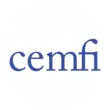
INOMICS Salary Report
The Gender Ratio in Economics in 2022
Read a summary using the INOMICS AI tool
In late 2022, the field of economics came under additional scrutiny for its unequal treatment of women. This article will examine the relative share of women in the field of economics, complementing the analysis of our survey data in the INOMICS Salary Report. This is helpful context for other discussions of gender discrimination in economics, as many statistics can be better understood after learning about the distribution of men and women in economics.
In the INOMICS Salary Report, we collected and analyzed survey data about economists’ careers worldwide. You can download the full report and examine the economics gender gap information in detail by downloading the Report.
The Gender Ratio in Economics Compared to STEM fields
Historically, economics has been a male-dominated field. IDEAS/RePEc estimates that 26.2% of economists are women. Meanwhile, 28% of our survey respondents were women. This is worth comparing to Science, Technology, Engineering and Mathematics (STEM) fields, which are notorious for being historically underrepresented by women:
- In the UK, according to UCAS data from 2022, 35% of STEM students in higher education are women. Computer science and engineering have the lowest proportions: in both fields only 19% of students are women. In mathematics and physical sciences, this percentage is in the 35-40% range. In our survey data, 29.7% of economists in the UK were women.
- According to the Pew Research Center in 2021, in the US women make up half (50%) of workers in STEM fields. However, this varies wildly by discipline; women made up 74% of workers in health-related jobs, but only 25% in computer-related jobs and 15% in engineering jobs. Among our survey respondents from the US, 32% are women.
- In the EU, 34% of STEM graduates were women in 2022. Out of the 27 EU countries, 22 have more male scientists than female. Eurostat data from 2021 shows that 41% of scientists and engineers in the EU are women, up from 32% in 2008. Our survey suggests there are fewer female economists in the EU: 31.3% of economists who responded to our survey from the EU were women.
- According to UNESCO Bangkok in 2020, in East Asia women made up 23.4% of research positions in STEM, while in South and West Asia women made up only 18.5% of these.
- The Brookings Institute reports (based on UNESCO data) that in sub-Saharan Africa in 2022 women made up 18-31% of science researchers. In our survey data of economists, 16.1% of respondents from Africa are women.
- According to a UNESCO interview in 2020, women made up 36% of STEM researchers in Latin America. In our survey data, 23.2% of economist respondents in Latin America were women.
Economics thus appears to have a comparable amount of women as STEM fields on average, though slightly more than engineering and computer science and likely somewhat less than mathematics and physical sciences.
It is possible that women choose to become economists at lower rates than men simply due to diverging interests. However, when examining the gender ratio in light of other research, this explanation appears unlikely to be true.
A Centre for Economic Policy Research (CEPR) article found that economics scores lower than other STEM fields across gender diversity metrics. Their article only considers university employment; it corroborates our findings that there are proportionally fewer women in more senior positions at universities.
The Women in Economics Index publishes reports that track gender inequality in economics, as well. Their most recent report from 2020 corroborates many of our findings, and features additional insight on the lack of female economists in leadership positions in the field.
Further Reading
Our Blog includes further information on the gender disparity in economics. The 2022 INOMICS Salary Report data allowed us to examine gender differences in economics such as the glass ceiling and leaky pipeline as well as the gender pay gap. Both phenomena suggest that women may be choosing fields other than economics due to unequal treatment rather than a lack of interest.
How should we work towards a more representative field of economics? A recent post on INOMICS discusses the ways that one economics department is aiming to increase diversity (in both gender and racial equality) in their program, with some early success. These types of initiatives can highlight the issues and the need for change while working towards that change.
At INOMICS, we value contributions from economists of all genders equally. We look forward to a future where the same can be said of our entire field.
-
- Master's Program
- Posted 1 week ago
Master in Economics and Finance
Starts 1 Sep at CEMFI in Madrid, Spain
-
- PhD Program
- Posted 2 weeks ago
Ruhr Graduate School in Economics: fully funded PhD Program
Starts 1 Oct at Ruhr Graduate School in Economics (RGS Econ) in Dortmund, Germany
-
- PhD Program
- Posted 1 week ago
PhD Programme UCD School of Economics (MLitt+PhD)
Starts 1 Sep at University College Dublin in Dublin, Ireland















